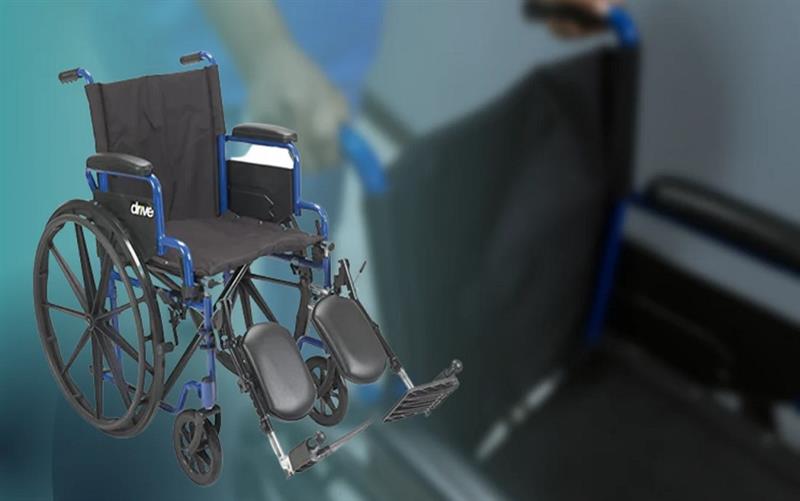
Choosing the right drive wheelchair in 2024 involves careful consideration of your personal needs, lifestyle, and the available features. By assessing your requirements, understanding the types of wheelchairs, and consulting with professionals, you can make an informed decision that enhances your mobility and independence. Remember to test the wheelchair and consider your budget to find a model that offers the best balance of comfort, functionality, and value.
Choosing the right wheelchair can significantly impact your mobility, independence, and overall quality of life. With advancements in technology and design, the options available in 2024 are more diverse and tailored to individual needs than ever before. Here’s a comprehensive guide to help you navigate the process of selecting the perfect drive wheelchair for your needs.
1. Assess Your Needs and Lifestyle
Before diving into the specifics of wheelchair models, it’s crucial to evaluate your personal requirements and lifestyle. Consider the following:
- Mobility Level: Determine whether you need a manual wheelchair or a power wheelchair. Manual wheelchairs require upper body strength and dexterity, while power wheelchairs are motorized and easier to operate with minimal effort.
- Daily Activities: Think about your daily routine. Do you need a wheelchair for short trips around the house, or do you require one for longer distances and outdoor use?
- Environment: Assess the terrain you’ll be navigating. Smooth indoor surfaces, rough outdoor paths, or a mix of both will influence your choice.
2. Understand the Types of Drive Wheelchairs
In 2024, drive wheelchairs come in various types, each designed to cater to specific needs:
- Manual Wheelchairs: Lightweight and easy to transport, these wheelchairs are ideal for individuals with good upper body strength. They come in standard, lightweight, and ultra-lightweight models.
- Power Wheelchairs: These are suitable for users with limited upper body strength or those who need to travel longer distances. They offer various controls, from joystick-operated to more advanced systems.
- Standing Wheelchairs: These allow the user to switch from a sitting to a standing position, providing benefits for circulation, muscle tone, and social interaction.
- Tilt and Recline Wheelchairs: These models offer adjustable seating positions to enhance comfort and reduce pressure sores.
Consider Key Features
When selecting a wheelchair, it's essential to focus on key features that will ensure both comfort and functionality. Here are the primary features to consider:
1. Seat Width and Depth
- Seat Width: The seat should be wide enough to sit comfortably but not so wide that it becomes difficult to maneuver through doorways or tight spaces. Measure the width of your hips and add a couple of inches for comfort.
- Seat Depth: The seat depth should support the full length of your thighs without putting pressure on the back of your knees. Typically, this is measured from the back of your buttocks to the inside of your knee, minus about two inches.
2. Weight Capacity
- Standard Capacity: Most standard wheelchairs can support up to 250 pounds.
- Heavy-Duty Options: For those who need a higher weight capacity, heavy-duty or bariatric wheelchairs can support up to 600 pounds or more. Ensure the wheelchair you choose can comfortably support your weight.
3. Portability
- Folding Mechanisms: If you need a wheelchair that can easily be transported in a car or taken on trips, look for models with easy folding mechanisms. Manual wheelchairs are generally more portable, but some power wheelchairs also offer foldable designs.
- Weight: Lightweight wheelchairs (weighing between 15-34 pounds) are easier to lift and transport compared to standard models.
4. Battery Life (for Power Wheelchairs)
- Range: Power wheelchairs come with different battery capacities, affecting how far you can travel on a single charge. Consider your daily travel needs and choose a wheelchair with a battery life that suits your lifestyle. A typical range is between 10-20 miles per charge.
- Charging Time: Check how long the battery takes to charge fully and plan accordingly to avoid being stranded with a depleted battery.
5. Customization Options
- Adjustable Armrests and Footrests: Look for wheelchairs with adjustable armrests and footrests to ensure proper support and comfort. Some models offer removable or swing-away footrests, making transfers easier.
- Back Support and Cushions: Adjustable backrests and customized cushions can provide additional support and comfort, helping to prevent pressure sores and improve posture.
- Tilt and Recline Features: For users who spend extended periods in their wheelchair, tilt and recline features can help distribute weight more evenly and reduce the risk of pressure ulcers.
6. Control Systems (for Power Wheelchairs)
- Joystick Controls: Most power wheelchairs use a joystick control, which is intuitive and easy to use. Ensure the joystick is positioned for comfortable use.
- Advanced Controls: Some models offer alternative control systems, such as sip-and-puff controls or head arrays, for users with limited hand function.
7. Durability and Build Quality
- Frame Material: Wheelchairs made from high-quality materials like aluminum or titanium are more durable and lightweight. Ensure the frame is sturdy enough to handle daily use.
- Wheel Type: Consider the type of wheels (solid, pneumatic, or semi-pneumatic). Solid wheels are maintenance-free, while pneumatic wheels provide a smoother ride but require more upkeep.
8. Accessories
- Storage Options: Look for wheelchairs with built-in storage options like pouches or baskets for carrying personal items.
- Safety Features: Consider additional safety features such as anti-tip bars, seat belts, and reflective materials for increased visibility.
9. Aesthetics and Personalization
- Color and Design: Many modern wheelchairs offer various color and design options, allowing you to choose one that suits your personal style.
- Additional Customizations: Some manufacturers offer additional customizations, such as specialized seating systems or adaptive controls tailored to specific medical conditions or personal preferences.